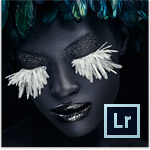

I took this photo as a juxtaposition of the linear abstractions of industrial might versus the tenacity of the living world. It is also ideal to demonstrate some of the advanced tone mapping that be easily carried out on a single RAW file. Tone mapping is normally associated with
HDRi techniques, which take the tonal ranges from a set of separate exposures. However much of this tonal detail can be recovered from the details in a RAW file.


I love the new controls for tonal adjustments in
Lightroom 4, they give very good controls over the overall tonal scale. Some folk like to use the histogram, you can just click in the region of the histogram graph you want to adjust and just stretch it left or right. I prefer to use the tonal sliders found in the Basic tools under the develop panel. I also use clarity and vibrancy under the presence section lower down in the basic tools. Importantly you can also avoid “
clipping”, which is adobes term for when a pixel value is adjusted to either the maximum shadow (black) or absence of shadow (white). The loss of details in these “clipped” regions are a common give-away for and over-cooked post-processing of digital photos. You want to stretch the histogram so it just touches the ends, but not stretch so much the graph builds up at the ends (in which case the small triangle above end of the histogram can be clicked to show (in red) the area of this clipping and loss of details.

A very interesting alternative, is to use a new kid on the block from
almalence (who also developed the
HDR Camera app). The
process is incredibly simple, you just drop and drag a photo to the hdRAW program and it generates a series of presets that apply a number of conventional tone mapping algorithms (see screen capture below). I like the “natural” preset which is based on
Reinhard‘s tonemapping algorithm , which I felt most closely matches what I saw when I took the photo. Clicking on the selected image takes you a larger preview and a few sliders for further adjustments.This natural preset is close to my little tweaks on the tone slides in Lightroom.

By the way, taking multiple photos at different bracketed exposure settings definitely gives you more information on the full dynamic range. Unfortunately I hadn’t taken such a set of photos in this case.The big advantage being able to get close to this extended range from a single photo, so that moving objects are not ghosted and its much easier to post-process.

 I took this photo as a juxtaposition of the linear abstractions of industrial might versus the tenacity of the living world. It is also ideal to demonstrate some of the advanced tone mapping that be easily carried out on a single RAW file. Tone mapping is normally associated with HDRi techniques, which take the tonal ranges from a set of separate exposures. However much of this tonal detail can be recovered from the details in a RAW file.
I took this photo as a juxtaposition of the linear abstractions of industrial might versus the tenacity of the living world. It is also ideal to demonstrate some of the advanced tone mapping that be easily carried out on a single RAW file. Tone mapping is normally associated with HDRi techniques, which take the tonal ranges from a set of separate exposures. However much of this tonal detail can be recovered from the details in a RAW file. 
 I love the new controls for tonal adjustments in Lightroom 4, they give very good controls over the overall tonal scale. Some folk like to use the histogram, you can just click in the region of the histogram graph you want to adjust and just stretch it left or right. I prefer to use the tonal sliders found in the Basic tools under the develop panel. I also use clarity and vibrancy under the presence section lower down in the basic tools. Importantly you can also avoid “clipping”, which is adobes term for when a pixel value is adjusted to either the maximum shadow (black) or absence of shadow (white). The loss of details in these “clipped” regions are a common give-away for and over-cooked post-processing of digital photos. You want to stretch the histogram so it just touches the ends, but not stretch so much the graph builds up at the ends (in which case the small triangle above end of the histogram can be clicked to show (in red) the area of this clipping and loss of details.
I love the new controls for tonal adjustments in Lightroom 4, they give very good controls over the overall tonal scale. Some folk like to use the histogram, you can just click in the region of the histogram graph you want to adjust and just stretch it left or right. I prefer to use the tonal sliders found in the Basic tools under the develop panel. I also use clarity and vibrancy under the presence section lower down in the basic tools. Importantly you can also avoid “clipping”, which is adobes term for when a pixel value is adjusted to either the maximum shadow (black) or absence of shadow (white). The loss of details in these “clipped” regions are a common give-away for and over-cooked post-processing of digital photos. You want to stretch the histogram so it just touches the ends, but not stretch so much the graph builds up at the ends (in which case the small triangle above end of the histogram can be clicked to show (in red) the area of this clipping and loss of details.
No comments:
Post a Comment